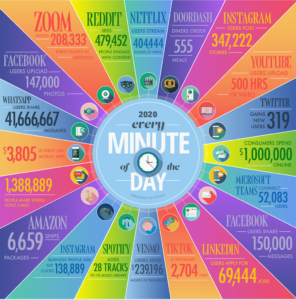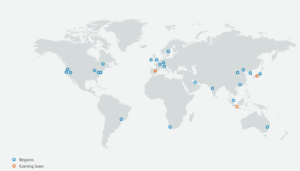
10 Big Data Statistics That Will Blow Your Mind

(photoschmidt/Shutterstock)
They call it “big data” for a reason–it’s really, really big. But getting your head wrapped around the growth of information digitization is not easy. That’s why we carefully curated these 10 mind-blowing facts about today’s data-geist, and how it’s projected to grow in the future.
1. The Global Datasphere will grow from 33 Zettabytes (ZB) in 2018 to 175 ZB by 2025, a 26% annual compound growth rate (CAGR), per IDC‘s DataAge 2025 report. However, only about 9ZB of that data will actually be stored, up from about 0.9ZB in 2015. Only about one-third of the data that’s stored will actually be used, the analyst group says.
2. The annual capacity of shipped HDDs, SSDs, and LTO tape drives is projected to amount to about 1,300 exabytes in 2020, and will reach 4,500 exabytes by 2025, with HDDs accounting for the lion’s share of that capacity, according to Coughlin Associates. Per IDC, HDDs will account for more than 80% of enterprise storage needs by 2025, with legacy SSDs accounting for about 15% and newer NVMe-NAND solid state devices accounting for less than 5%.
3. HDD shipments peaked in 2010 with 651.3 million units, falling to 316.3 million by 2019, according to Statista. However, the number of HDD units shipped is expected to begin growing again in the next few years, as storage demands increase, according to several sources. (Clearly, the size of HDDs has increased substantially, enabling organizations to store more bytes on smaller number of physical units.)
4. Data storage on endpoint devices is projected to plummet by 2024 (despite the advent of super-fast 5G networks), as organizations move data storage to in-house and cloud data centers. In fact, the shift from using endpoints like cell phones, PCs, and IoT devices to store data to using core data centers completely reverses the dynamic from 2015, when most data was stored on endpoints and enterprise data storage was relatively small, according to IDC’s DataAge 2025 report.
5. More than 22 ZB of storage capacity will need to ship from 2018 to 2025 to keep up with storage demands, according to IDC’s DataAge 2025 report. About 59% of that capacity will come from HDD deliveries. The fraction stored on SSDs, including NVMe, will grow but it won’t put much of a dent in growth of HDD storage.
6. Every minute of every day, consumers spend $1 million online, make 1.4 million video and voice calls, share 150,000 messages on Facebook, and stream 404,000 hours of video on Netflix, according to Domo’s eighth-annual Data Never Sleeps graphic.
7. More data is created every hour today than in an entire year just 20 years ago, according to the Seagate Rethink Data Survey by IDC, which was released in January 2020.
8. The public cloud will store more data than enterprise data centers by 2021, according to IDC’s DataAge 2025 report. (This figure was before COVID-19, which has accelerated many organizations’ cloud-migration plans.)
9. AWS currently has 77 Availability Zones (AZs) around the world, with three more planned. According to 2014 estimates by TPM, that likely means that AWS today owns and operates anywhere from 150 to 220 data centers around the world (assuming an average of two to three data centers per AZ). If each data center contains 50,000 to 80,000 servers (which was the case in 2014, per AWS engineer James Hamilton’s re:Invent presentation), that means AWS runs 7.5 million to 17.6 million servers. Bezos only knows how much data AWS stores.
10. Each connected person will have at least one data interaction every 18 seconds. Many of these interactions are because of the billions of IoT devices connected across the globe, which are expected to create over 90ZB of data in 2025. Over the next five years, approximately one billion more people will begin to interact with data every day, representing 75% of the earth’s population, per IDC.
Big data may not be the headline maker that it was in 2015. But the underlying drivers that put big data on the map back then are still in play, and in fact are accelerating in some cases. Perhaps the phenomenon needs a new name. Email [email protected] if you come up with a compelling one.
Related Items:
Global DataSphere to Hit 175 Zettabytes by 2025, IDC Says
The Big Cloud Data Boom Gets Even Bigger, Thanks to COVID-19






























